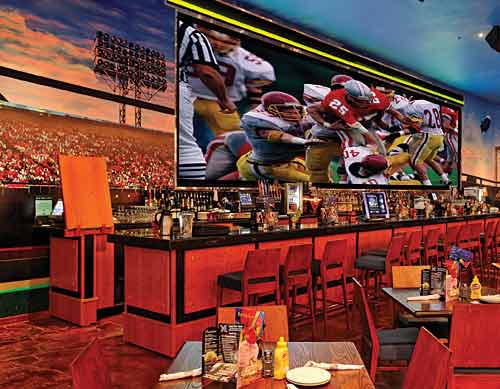Match Game: Specifying the Right Projection Screen for the Presentation Space
Uniformity, Resolution, and Gain
Three other important characteristics to consider when selecting a
projection screen are uniformity, resolution, and gain. Uniformity describes the consistency of the brightness of the screen. Uniformity
in a screen ensures that the projected image will not appear to have
patches that are brighter or darker, but will instead appear evenly
illuminated across the entire projection surface. Resolution refers to the screen's ability to display fine detail. Gain refers to the reflectivity of the screen and its ability to make the reflected image brighter than the output from the projector warrants by reducing the viewing angle of the image.
|
Physical Characteristics
After the height and the width of the screen has been identified, and the surface of the screen selected, the final step in specifying a projection screen is to decide upon the different physical characteristics of the screen. These characteristics need to match the particular needs or uses of the projection screen and the presentation space.
Front or Rear Projection
There are two projection methods: front projection and rear projection. Much like winds are named by the direction that they come from,
not the direction they are headed, so too, are projection methods. Front projection occurs when the projector is placed out in front of the
projection screen, as if it is a member of the audience. The projector shoots its visual image toward the projection screen, which then reflects the image back into the eyes of the audience. In front projection, the original image started in front of the projection screen.
In rear projection, the projector is positioned behind the projection screen. Instead of using the projection screen to reflect the image back into the audience, a rear projector transmits its visual message through the rear projection screen and into the audience.
Each of these projection methods has strengths and limitations. A brief compare and contrast of these two projection methods reveals that the real estate requirement is perhaps the largest difference between front and rear projection. In front projection, the projector sits in the same room as the audience, either perched on a conference table, on a cart in the middle of the room, or suspended overhead. Rear projection requires that a dark room exist behind the projection screen that provides enough room for the projector to project an image of the necessary size. The larger the image, the deeper the dark room must be to support it.
However, rear projection allows high-quality projection capabilities, without the clutter of the projector and the power cords out in plain sight. Rear projection also makes it impossible for the presenter to walk in front of the projection beam, nearly blinding himself or herself and blocking out the visual image in the process. Rear projection also manages ambient light better. A front projection screen cannot differentiate between the light from the projector and the light from overhead, it reflects all of it back into the eyes of the audience. With rear projection, the dark room behind the screen absorbs ambient light like a black box. The ambient light passes through the screen into the dark space, while the projected image passes through the projection screen into the auditorium, classroom, or conference room.
Electric or Manual Projection Screens
Most often the decision between selecting an electric projection screen and a manual projection screen is a matter of preference reserved for smaller screen sizes. When the screen size expands, for instance to 16' x 20', it is unreasonable to think that someone will reach over 16 feet into the air and pull it down.
Today, there are a variety of ways to control both the small and large projection screens electrically. It can be as simple as touching a button on the wall to lower and raise a projection screen; as convenient as a handheld infrared or radio frequency remote control; or as intricate as a fully integrated touch panel that also incorporates a sound system. With the most integrated solutions, it is possible to touch only one button to make the room presentation ready. The projector drops out of the ceiling, the projection screen descends from its recessed hiding place and the lights dim to a pre-selected level.










